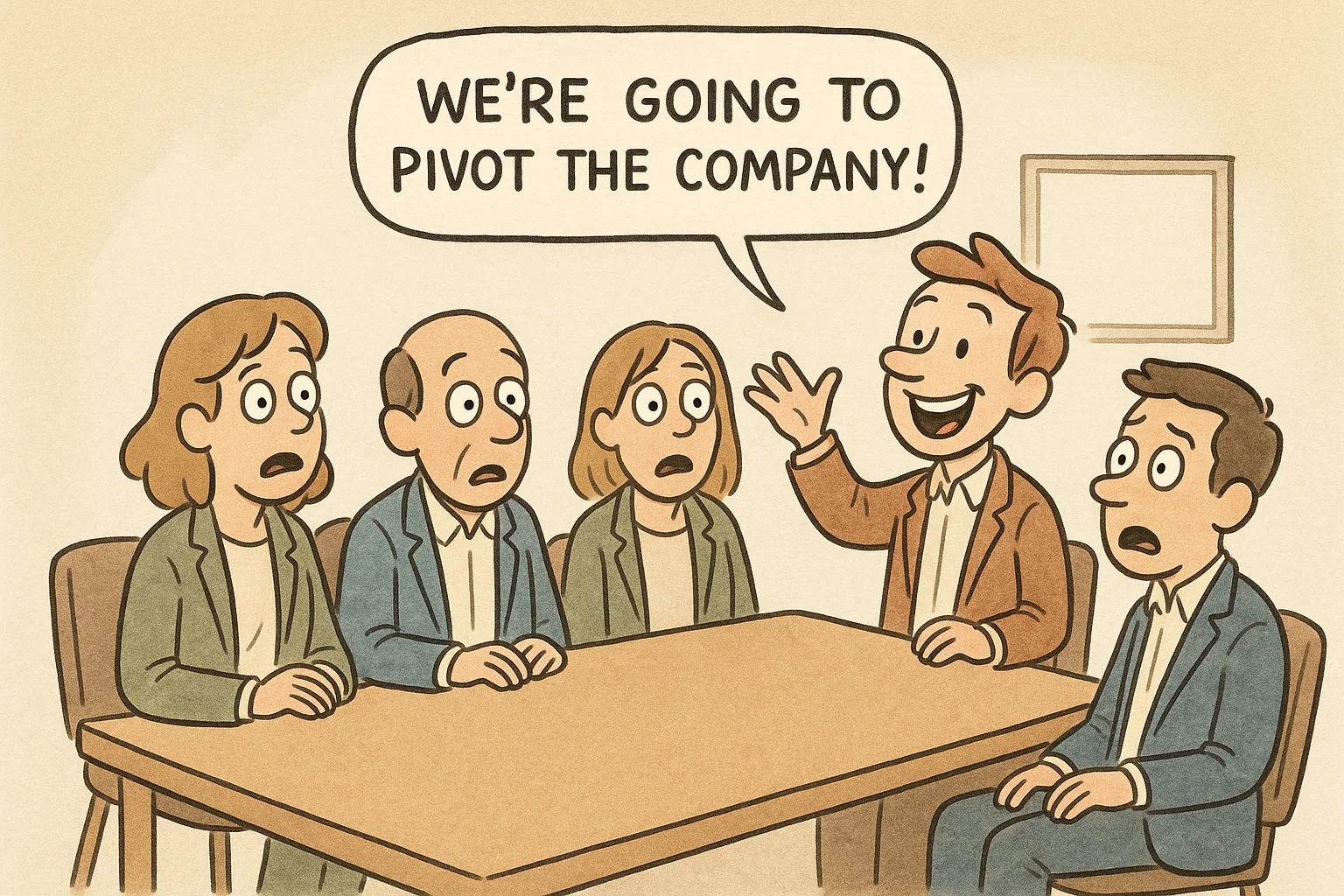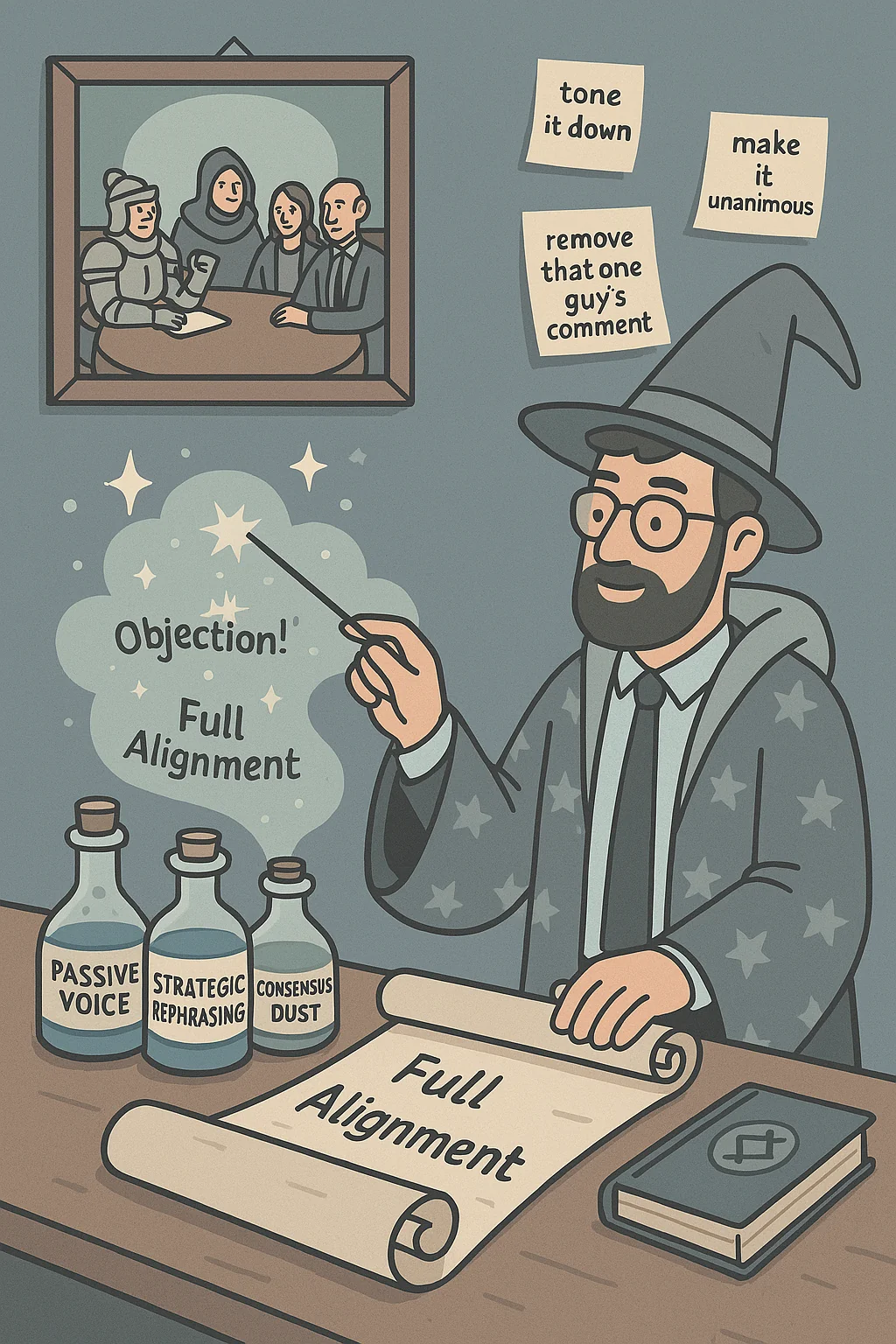· I'mBoard Team · general · 3 min read
The Ripple Effect: How Consensus Shapes Boardroom Excellence
Unlock the full potential of your boardroom with consensus-driven decision-making. Discover how consensus builds trust, enhances commitment, and boosts problem-solving capabilities among board members. Learn practical steps to transform your board's effectiveness through collaborative governance.

Welcome to the third installment of our series on boardroom consensus. We’ve explored the concept of consensus and its initial benefits. Revisit the methods to achieve consensus in The Cornerstone of Effective Boards.
Now, let’s dive deeper into how consensus creates a ripple effect, enhancing trust, commitment, and problem-solving in the boardroom. For board members, chairpersons, and executives, understanding these benefits is crucial for elevating governance effectiveness.
Building Bridges: Consensus as the Architect of Boardroom Trust
Consensus-building does more than just align decisions; it constructs a foundation of trust among board members. When everyone’s voice is heard and valued, it creates an atmosphere of mutual respect and understanding. This trust manifests in several ways:
- Open communication: Board members feel safer sharing diverse viewpoints.
- Reduced defensiveness: Trust minimizes the fear of criticism, encouraging more honest discussions.
- Improved collaboration: Trusting relationships lead to more effective teamwork beyond the boardroom.
A board built on trust is more resilient, adaptable, and capable of navigating complex challenges cohesively.
From Agreement to Action: Harnessing Consensus for Unwavering Commitment
Consensus-driven decisions benefit from a unique advantage: unparalleled commitment to implementation. Here’s why:
- Ownership: When board members actively participate in decision-making, they develop a sense of ownership over the outcomes.
- Clarity of purpose: The consensus process ensures everyone understands the reasoning behind decisions, leading to more dedicated execution.
- Reduced resistance: With all voices heard, there’s less likelihood of passive resistance during implementation.
This increased commitment translates to more efficient execution of strategies and better organizational outcomes.

Minds United: Unleashing Collective Intelligence Through Consensus
Consensus isn’t just about agreement; it’s about harnessing the collective intelligence of the board. This approach enhances problem-solving capabilities by:
- Diverse perspectives: Encouraging all members to contribute brings a wealth of experiences and viewpoints to the table.
- Synergy of ideas: The collaborative nature of consensus often leads to innovative solutions that no single member might have conceived alone.
- Thorough analysis: The process of reaching consensus involves comprehensive examination of issues, resulting in more robust solutions.
By leveraging consensus, boards can tackle complex challenges more effectively, leading to superior decision-making.
Consensus in Practice: A Board’s Journey from Conflict to Collaboration
Consider the experience of GlobalTech Corp, a multinational technology company. Their board was divided over a major acquisition, with heated debates in every meeting. By adopting a consensus-driven approach, they not only reached a decision but also:
- Uncovered overlooked synergies between the companies
- Developed a comprehensive risk mitigation strategy
- Improved board dynamics, leading to more productive discussions on other issues
The result? A successful acquisition that exceeded market expectations and a more cohesive, effective board.

Your Consensus Toolkit: Practical Steps for Boardroom Transformation
Ready to enhance your board’s consensus-building capabilities? Try these practical steps:
- Implement a “devil’s advocate” role: Ensure all angles are considered in discussions.
- Use anonymous idea submission techniques: Allow for sensitive topics to be discussed openly.
- Rotate meeting facilitation responsibilities: Regularly change who leads meetings to give different perspectives a chance to guide the process.
The Consensus Advantage: Charting the Course for Board Excellence
As we’ve seen, consensus in the boardroom goes far beyond simple agreement. It builds trust, fosters commitment, and enhances problem-solving, creating a powerful synergy that elevates board performance.
In our final installment, we’ll explore how to implement and measure the effectiveness of consensus-driven governance. For practical strategies on implementing and measuring consensus, read Mastering the Art of Consensus.



